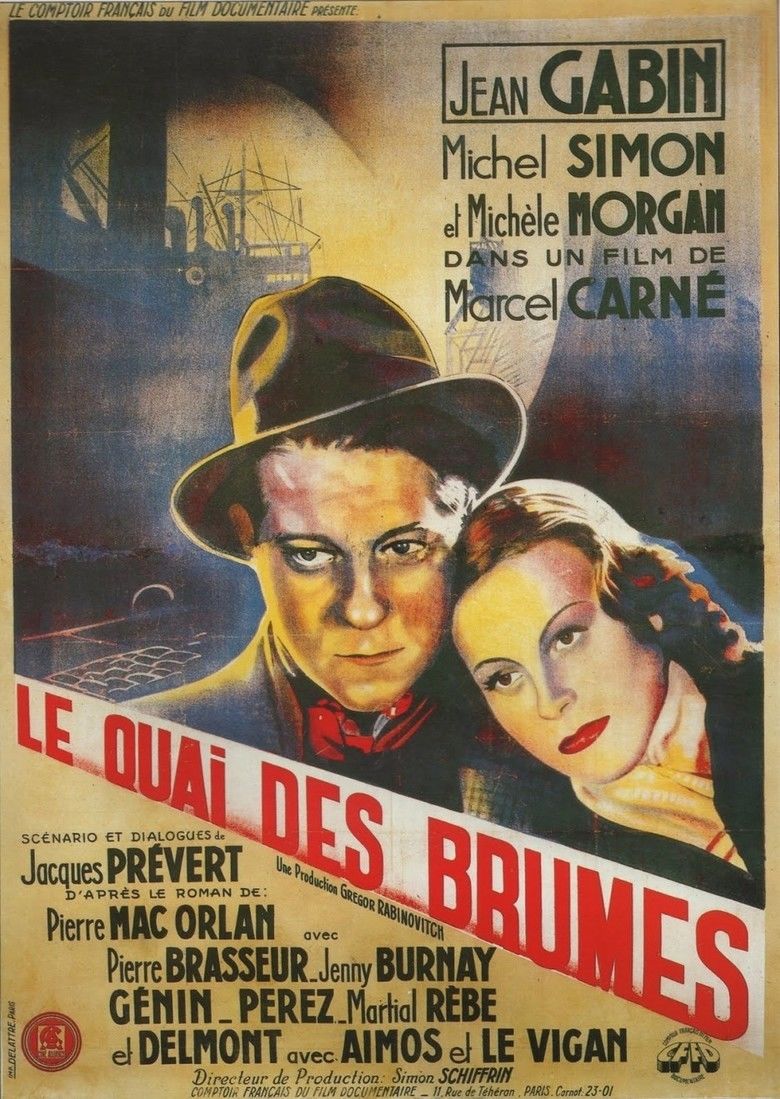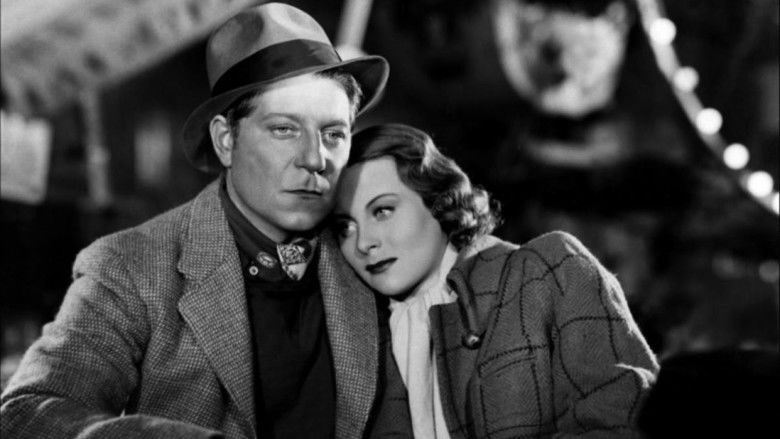Port of Shadows
8.6 /10 1 Votes
96% Rotten Tomatoes Genre Crime, Drama, Romance Screenplay Jacques Prevert | 7.6/10 IMDb Director Marcel Carne Duration Country France | |||||||||||||||||||||||||||||||||
 | ||||||||||||||||||||||||||||||||||
Release date 18 May 1938 (France)October 29, 1939 (USA) Cast (Jean), (Zabel), (Nelly), (Lucien), Édouard Delmont (Panama), (Le peintre)Similar movies The Patriot , From Paris with Love , Special Forces , Looper , Quills , Of Gods and Men Tagline ...A Story Which the French Have Put On the Screen With Daring Skill! | ||||||||||||||||||||||||||||||||||
Port of shadows 1938 trailer with subtitles
Port of Shadows (French: Le Quai des brumes) is a 1938 French film directed by Marcel Carné. It stars Jean Gabin, Michel Simon and Michèle Morgan. The screenplay was written by Jacques Prévert based on a novel by Pierre Mac Orlan. The music score was by Maurice Jaubert. It is a notable example of the poetic realism genre. The film was the 1939 winner of France's top cinematic prize, the Prix Louis-Delluc.
Contents

A scene from the film is seen projected in the 2007 Academy Award-winning dramatization of Ian McEwan's wartime tragic drama Atonement.

According to Charles O'Brien, the film would be one of the first to be called "film noir" by critics (1939, France).

Plot

On a foggy night, Jean (Jean Gabin), an army deserter, catches a ride to the port city of Le Havre. Hoping to start over, Jean finds himself in a lonely bar at the far edge of town. But, while getting a good meal and civilian clothes, Jean meets Nelly (Michèle Morgan), a 17-year-old who has run away from her godfather, Zabel, with whom she lives. Jean and Nelly spend time together over the following days, but they are often interrupted by Zabel, who is also in love with her, and by Lucien, a gangster who is looking for Nelly's ex-boyfriend, Maurice, who has recently gone missing. Jean resents the intrusions of Lucien and twice humiliates him by slapping him. When Nelly finds out that her godfather killed Maurice out of jealousy, she uses the information to blackmail him and prevent him from telling the police that Jean is a deserter. Though the two are in love, Jean plans to leave on a ship for Venezuela. At the last minute Jean leaves the ship to say goodbye to Nelly; he saves her from the hands of Zabel, whom he kills, but when they go out on to the street he is shot in the back by Lucien and dies in her arms.
Cast
Style
The film is in the style that Carné was most associated with, poetic realism. Luc Sante writes that "Port of Shadows possesses nearly all the qualities that were once synonymous with the idea of French cinema. Gabin—eating sausage with a knife or talking around a cigarette butt parked in the corner of his mouth or administering a backhanded slapping him on his cheek —is the quintessential French tough guy, as iconic a figure as Bogart playing Sam Spade. Michèle Morgan, ethereal and preoccupied, may pale a bit in comparison to some of her sisters in Parisian movies of the time (Arletty, for example), but she comes to life in bed, in a scene you can’t imagine occurring in an American movie before 1963 or so. The hazy lights, the wet cobblestones, the prehensile poplars lining the road out of town, the philosophical gravity of peripheral characters, the idea that nothing in life is more important than passion—such things defined a national cinema that might have been dwarfed by Hollywood in terms of reach and profit but stood every inch as tall as regards grace and beauty and power."
Reception
Frank S. Nugent called the film "one of the most engrossing and provocative films of the season"; according to him, "it's a thorough-going study in blacks and grays, without a free laugh in it; but it is also a remarkably beautiful motion picture from the purely pictorial standpoint and a strangely haunting drama. As a steady diet, of course, it would give us the willies; for a change it's as tonic as a raw winter's day." At the time of its release, the film was widely criticized for being too negative about the State and moral character of the French.
55 years after its premiere, Luc Sante, writing about the film for its DVD release by Criterion Collection, called the film a "definitive example of the style known as “poetic realism.” The ragged outlines, the lowdown settings, the romantic fatalism of the protagonists, the movement of the story first upward toward a single moment of happiness and then down to inexorable doom—the hallmarks of the style had germinated in some form or other through the decade, but in Marcel Carné's third feature they came together as archetypes."
Director Carl Dreyer included the film in his list of top ten films.
Home media
Prior to July 2004, Criterion Collection gave the film a "bare-bones" release, with a booklet and limited on-screen special features; according to James Steffen of Turner Classic Movies, the DVD's "high-definition transfer does justice to Carné, Schufftan and Trauner's richly detailed vision", though there are issues because of the "highly variable" quality of the 35 mm film used: "Within the same scene some shots can be startlingly clear, while others are very grainy and have much weaker contrast and detail. On the balance, it still looks extremely good for a film of this vintage." Steffen also noted the "mono sound is clear and without too much distortion. The characters use lots of colorful slang whose flavor is difficult to translate into English, but the subtitles do an admirable job."
References
Port of Shadows WikipediaPort of Shadows IMDbPort of Shadows Rotten TomatoesPort of Shadows themoviedb.org
